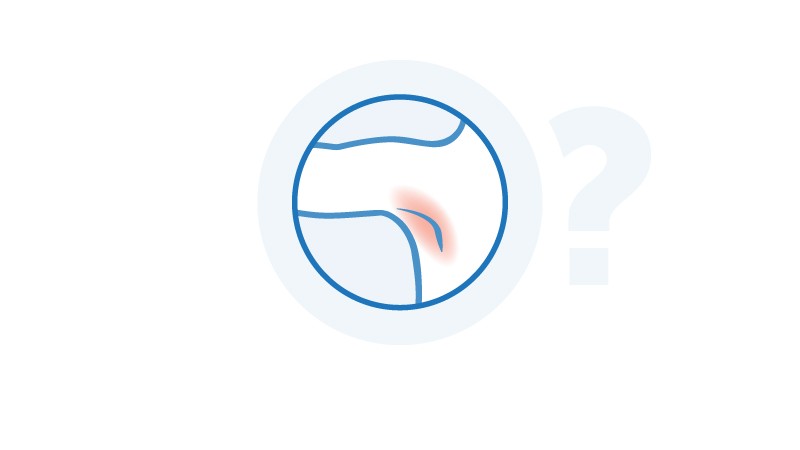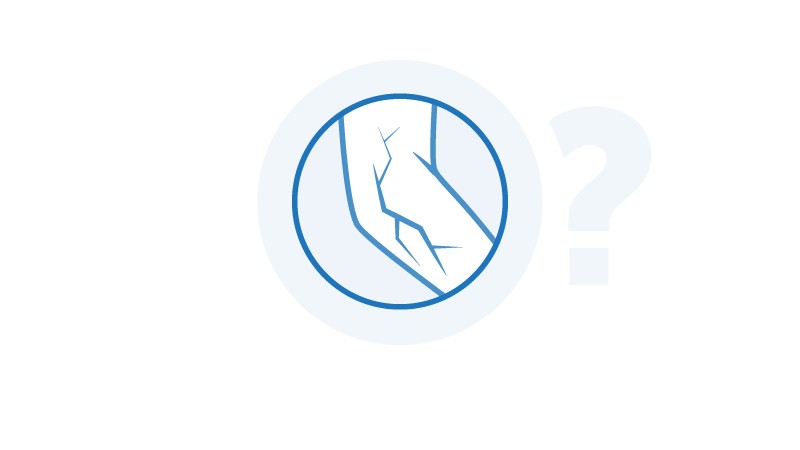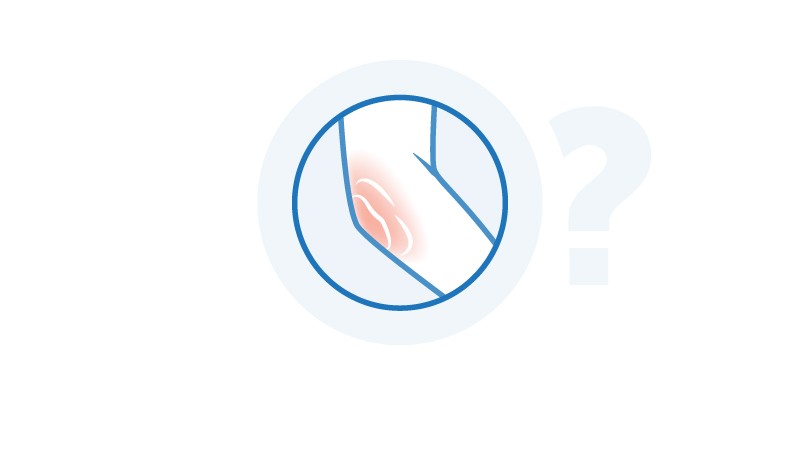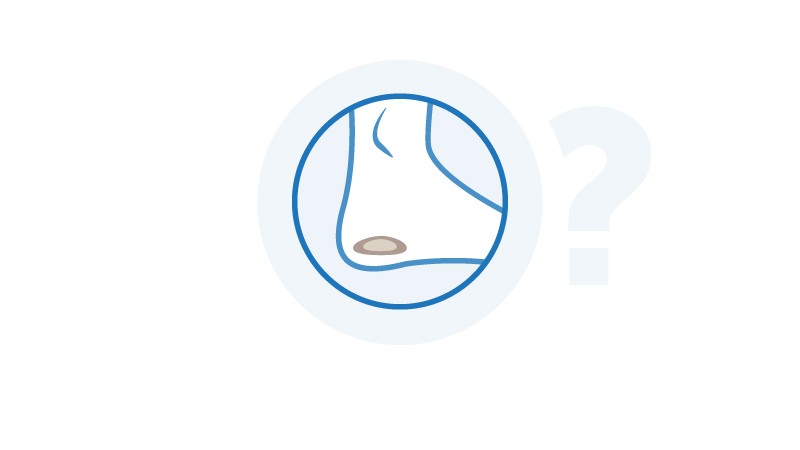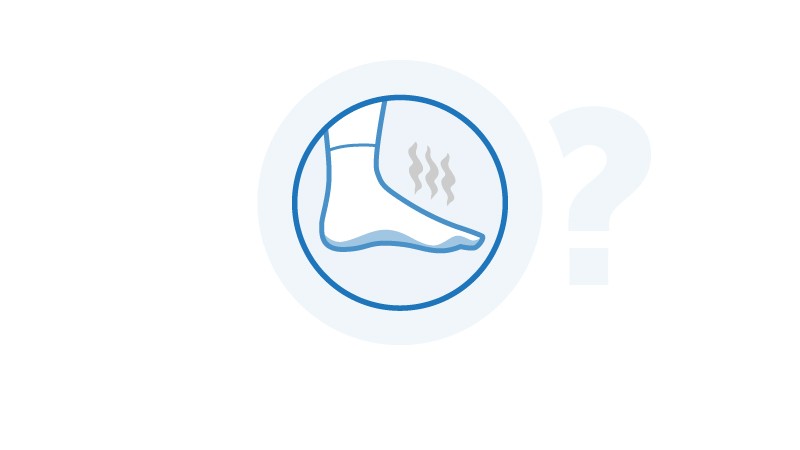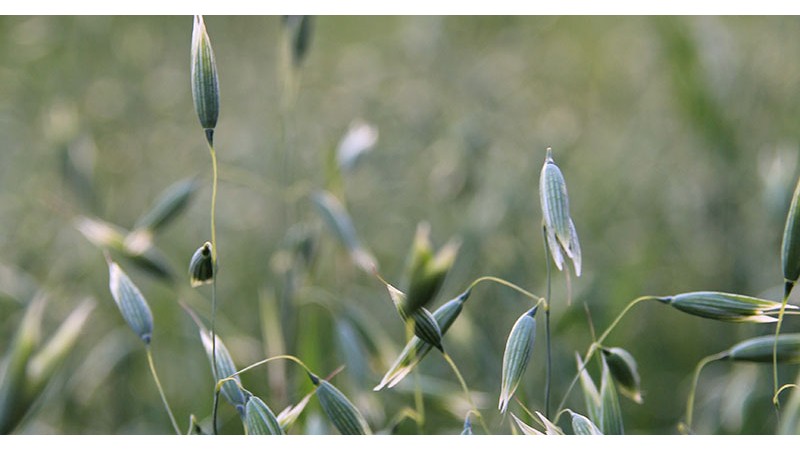Коллоидная овсянка, часть II: Атопический дерматит в особых группах населения, клиническая эффективность и переносимость помимо экземы
Блэр Алле, дипломированный врач, и Адам Фридман, дипломированный врач, заведующие кафедрой дерматологии Школы медицины и медицинских наук Джорджа Вашингтона, Вашингтон, округ Колумбия
АННОТАЦИЯ
Коллоидная овсянка имеет широкий спектр применений, клинических преимуществ, а также применений, выходящих за рамки атопического дерматита. Прежде всего, было доказано, что она полезна при лечении атопического дерматита у людей с цветной кожей. Кроме того, доказана ее польза при лечении дерматита кистей рук, ксероза, псориаза, кожных проявлений сахарного диабета, а также при лечении кожных побочных эффектов, связанных с противоопухолевой терапией. Во второй части данной серии, состоящей из 2 частей, мы исследуем эффективность, безопасность и широкое клиническое применение коллоидной овсянки.
Журнал лекарственных средств в дерматологии 2020;19:10 (дополнение): с. 8-11
ВВЕДЕНИЕ
Атопический дерматит при цветной коже
В первой части мы рассмотрели, каким образом коллоидная овсянка может быть полезна при лечении АД. Было также обнаружено, что коллоидная овсянка полезна пациентам с цветной кожей и АД. Понимание пользы коллоидной овсянки для данных групп населения начинается с изучения структурных и функциональных особенностей цветной кожи.
Пациенты с цветной кожей охватывают широкий спектр расовых и этнических групп, включая, но не ограничиваясь ими, лиц африканского, афроамериканского, афро-карибского, китайского, японского, коренного американского, индейского, навахо, Юго-Восточной Азии, индейского, ближневосточного и латиноамериканского происхождения и наследия. Расовые и этнические различия в цвете кожи напрямую связаны с различиями в количестве, размере и агрегации меланосом внутри меланоцитов и кератиноцитов. У субъектов с цветной кожей наблюдается тенденция к увеличению размеров меланосом с большим распределением по всему эпидермису.1 Гунатилаке и соавт. обнаружили, ччто дендриты меланоцитов пациентов с IV-V типом кожи по Фицпатрику были более кислыми, чем дендриты меланоцитов людей с I-II типом кожи, и что меланоциты с VI-V типом кожи также переносят больше меланосом в роговой слой, что позволяет предположить, что секреция меланосом может способствовать более кислому рН кожи IV-V типа.2 Хорошо известно, что роговой слой лучше всего функционирует при сильнокислом рН поверхности, который, как считается, выполняет антимикробную функцию, регулирует гомеостаз барьера и десквамацию, а также обеспечивает оптимальную активность церамидогенерирующих ферментов – сфингомиелиназы и β-глюкоцереброзидазы.2 Имеются противоречивые данные о расовых различиях в структуре рогового слоя. В одной из обзорных статей утверждается, что многие исследования, приводимые в литературе, имеют небольшие популяции пациентов и менее оптимальный дизайн, что не позволяет сделать окончательные выводы. В исследованиях с использованием методов соскоба липкой лентой и микроскопической визуализации было выявлено, что у пациентов с V и VI типами кожи роговой слой имеет повышенную плотность, но в целом не уступает по толщине II и III типам. Тейлор цитирует различные исследования, которые утверждают, что повышенная плотность может быть обусловлена повышенным содержанием липидов.1
В рамках более масштабного исследования, сравнивающего эффективность коллоидной овсянки и рецептурного барьерного крема при лечении АД легкой и умеренной степени тяжести, 49 афроамериканским детям в возрасте от 2 до 15 лет рандомизированно назначали два раза в день либо коллоидную овсянку, либо рецептурный барьерный крем. Коллоидная овсянка обеспечила быстрое улучшение исходного показателя EASI к 7-му дню (62,9% против 53,7%) в дополнение к заметному улучшению показателей зуда к 7-му дню (43,1% против 33,3%) по сравнению с рецептурным барьерным кремом.3 Оба метода лечения были клинически эффективными и хорошо переносились.
Клиническая эффективность и переносимость помимо экземы
Было обнаружено, что коллоидная овсянка эффективна при нескольких клинических состояниях, помимо АД. Дерматит кистей рук – распространенное и часто встречающееся заболевание, которое в непропорциональной степени затрагивает профессиональные группы, подвергающиеся воздействию раздражающих веществ или аллергенов. Основными методами лечения являются избегание раздражающих факторов и аллергенов и применение местных кортикостероидов, хотя длительное их использование может привести к тахифилаксии, а также использование стероидсберегающих препаратов. В рандомизированном двойном слепом плацебо-контролируемом клиническом исследовании с 6-недельным наблюдением пациенты были рандомизированы для двухнедельного применения флуоцинолона 0,025% с последующим применением либо 1% коллоидного крема, либо базового крема в течение 4 недель в качестве монотерапии. По истечении шести недель у пациентов, рандомизированных для приема 1% коллоидной овсянки, наблюдалось статистически значимое улучшение показателей тяжести экземы и качества жизни (HESI, индекс тяжести экземы рук; DLQI, дерматологический индекс качества жизни) по сравнению с контрольной группой.4
Во многих исследованиях также оценивалась эффективность коллоидной овсянки при лечении ксероза средней и тяжелой степени, или сухости кожи. Данные исследования в совокупности продемонстрировали значительно большее улучшение по сравнению с исходным уровнем барьерной функции кожи (с помощью корнеометрических измерений трансэпидермальной потери воды), общей сухости и зуда по сравнению с любым веществом отдельно, аналогичным керамидным кремом или рецептурным барьерным кремом.5-7 Лечение лосьоном из коллоидной овсянки также показало быструю и длительную эффективность: в исследовании Небус и соавт., проведенном на тридцати пациентах в возрасте от 18 до 55 лет, значительное улучшение показателей трансэпидермальной потери воды и ксероза наблюдалось уже через 4 дня применения. Улучшения сохранялись и после 48-часового периода регрессии.8
Псориаз – распространенное хроническое заболевание кожи, поражающее примерно 2% населения, которое характеризуется нарушением регуляции врожденной иммунной системы и неконтролируемой пролиферацией кератиноцитов.9 Пациенты часто страдают от сухости и шероховатости, что приводит к значительным психосоциальным страданиям. Коллоидная овсянка также показала свою эффективность у пациентов с легкой формой псориаза. В ходе 4-недельного исследования 60 взрослых женщин с псориазом и чувствительной кожей, отмечаемых самими пациентками, испытуемым было дано указание наносить 1%-ную коллоидную овсяную кашу по крайней мере один раз в день на все тело, уделяя особое внимание сухим участкам. Через 4 недели применения препарата участники отметили улучшение зуда и шелушения на 45% по сравнению с исходными показателями. 96% пациентов отметили, что применение 1% лосьона на основе коллоидной овсянки помогло уменьшить выраженность и количество заметных пятен.10
Также было описано успешное лечение контагиозного моллюска (МК) коллоидной овсянкой. Контагиозный моллюск, кожная инфекция, вызываемая ДНК-поксвирусом, является одной из наиболее распространенных вирусных инфекций кожи, наблюдаемых у детей. В открытом исследовании 6 детей в возрасте 5-11 лет с по меньшей мере 10 кожными поражениями МК лечили кремом с оксидом цинка, содержащим коллоидные экстракты овсянки (Avena rhealba). После 4 недель терапии у 4 из 6 пациентов наблюдалось полное рассасывание поражений, а у 2 оставшихся пациентов общее количество поражений уменьшилось более чем на 50%.11 Пазьяр и соавт. утверждают, что противовирусные свойства коллоидного экстракта овсянки, вероятно, обусловлены ингибирующим действием на образование эйкозаноидов, экспрессию цитозольной фосфолипазы А2 и мобилизацию арахидоновой кислоты в кератиноцитах человека.12
Помимо того, что коллоидная овсянка продемонстрировала свою пользу при различных дерматозах, она также постоянно отмечается как безопасное и эффективное средство. Двенадцать независимых исследований оценивали раздражающие и аллергические реакции с помощью патч-тестов различных средств по уходу за кожей, содержащих овсянку в различных составах, включая лосьоны, кремы, сыворотки и очищающие средства. Из 2565 участников только у 20 человек наблюдались преходящие реакции низкой степени выраженности, такие как слабая эритема, и только у 3 человек – реакции 1 степени выраженности с отеком.13 В дополнении к этому Крике и др. описали два исследования, оценивающие офтальмологическую переносимость моющего средства для лица у 43 женщин с нормально чувствительными глазами. Офтальмологические реакции были отмечены только у 3 человек и подтверждены клиническим офтальмологическим обследованием.13 У 47 пациентов клиническая эффективность препарата была продемонстрирована в течение шести недель: увлажнение кожи, снижение индекса шелушения и субъективная оценка признаков сухости кожи после применения препарата. Дерматологическая оценка показала значительное улучшение сухости, шелушения и шероховатости кожи на обработанных участках по сравнению с контрольными.13 В итоге Управление по контролю качества пищевых продуктов и лекарственных средств США в целом признает коллоидную овсянку безопасной и эффективной.
Системные заболевания с кожными проявлениями
Сообщалось о пользе коллоидной овсянки при лечении кожных проявлений системных заболеваний. Сахарный диабет часто приводит к изменениям кожи, включая диабетическую дермопатию и ксероз от очагового до умеренного. Пьерард и соавт. описывают непрерывность между ощущением сухости кожи, ксерозом и иктиозоподобными проявлениями на голенях и стопах у пациентов с сахарным диабетом.14 В исследовании 46 пациентов с сахарным диабетом и умеренной сухостью голеней применение дважды в день овсяного лосьона с авенантрамидами и овсяным маслом привело к значительному уменьшению эритемы, трещин, шелушения и тактильной шероховатости уже через 1 неделю использования. Улучшения продолжались в течение 4 недель лечения.15
Дерматологические побочные эффекты, связанные с противоопухолевой терапией
В литературе также описана польза овса в борьбе с кожными токсинами при противоопухолевой терапии. Таргетная терапия, новый вид лечения рака, который специфически воздействует на опухолевые клетки, хорошо известна своей значительной дерматологической токсичностью.16 Сообщалось о более чем 50 различных дерматологических проявлениях токсичности, связанных с более чем 30 противораковыми препаратами, наиболее распространенными из которых являются кожные реакции на руках и ногах, изменения ногтей, папулопустулезные высыпания (похожие на акне), почесуха (сильный зуд), вторичные злокачественные новообразования, новые новообразования и алопеция, вызванная химиотерапией (выпадение волос или очаговое облысение).17–18 Особый интерес к изучению представляют ингибиторы рецепторов эпидермального фактора роста (РЭФР) и ингибиторы тирозинкиназы, которые используются для лечения широкого спектра солидных злокачественных новообразований органов. Лечение и оптимальный контроль данных кожных проявлений важны, поскольку они могут быть достаточно серьезными, чтобы заставить пациентов прекратить лечение.
Среди пациентов, получавших ингибиторы РЭФР, до 90% сталкивались с папулезно-пустулезными высыпаниями.19 Сыпь обычно развивается в первые 2-4 недели после начала терапии в виде зудящих и болезненных эритематозных папул и пустул на волосистой части головы, лице, шее, груди и спине.20 Интересно, что существует взаимосвязь между развитием сыпи и реакцией на химиотерапию и конечной выживаемостью.21 Зуд – еще одно распространенное нежелательное явление при применении РЭФР, которым страдают до 54,9% пациентов в зависимости от конкретной терапии РЭФР, и которое может оказывать значительное влияние на качество жизни.22 Александреску и соавт. описывали случаи лечения коллоидной овсянкой 11 пациентов с сыпью, вызванной цетуксимабом, эрлотинибом, панитумумабом и сорафенибом. Коллоидную овсянку наносили три раза в день в течение 7 дней. Общая частота ответов составила 100%, полный ответ – 60%. Авторы утверждают, что наблюдаемые высыпания у упомянутых пациентов могут представлять собой воспалительную реакцию на ингибиторы РЭФР что объясняет реакцию на коллоидную овсянку, учитывая ее противовоспалительные свойства.23 В дополнительном исследовании, проведенном на Тайване, изучалась польза коллоидной овсянки в выборке из 30 пациентов с дерматологической токсичностью, связанной с ингибированием РЭФР. Пациенты применяли коллоидную овсянку три-пять раз в день в течение 4 недель подряд. Тяжесть дерматологической токсичности, поражение поверхности тела и зуд улучшились через 4 недели без каких-либо сообщений о побочных явлениях.24 В отличие от более мощных средств местного лечения, таких как топические стероиды, метронидазол, эритромицин, салициловая кислота и перекись бензоила, у коллоидной овсянки не отмечалась какая-либо токсичность.23
Лучевая терапия используется при лечении различных форм рака и сопровождается острыми и хроническими изменениями кожи. Ранние кожные реакции обычно возникают в течение нескольких дней - недель и первоначально проявляются в виде преходящей или генерализованной эритемы. Если суммарная доза облучения достигает 20 грей, может развиться сухая десквамация, характеризующаяся зудом, шелушением и отслаиванием кожи.25 Коллоидная овсянка была изучена в качестве средства для лечения кожных реакций, вызванных радиацией. В исследовании 24 пациентов, проходивших радикальную лучевую терапию по поводу анального рака, пациенты были рандомизированы для лечения либо коллоидной овсянкой, либо водным кремом. Кожные реакции в обеих группах были сопоставимы, но у группы, получавшей коллоидную овсянку, наблюдался заметный отклик в отношении регенерации эпидермиса при последующем наблюдении.26 Поскольку методы лечения рака продолжают развиваться, то же самое должно происходить и с методами лечения их кожных побочных эффектов. Коллоидная овсянка показала себя многообещающей с отличным профилем безопасности.
ВЫВОДЫ
Во второй части данной серии, состоящей из двух частей, мы рассмотрели широкий спектр клинических применений коллоидной овсянки. Доказано, что коллоидная овсянка полезна при лечении атопического дерматита у пациентов афроамериканского происхождения. Кроме того, доказана ее польза при лечении дерматита кистей рук, ксероза, псориаза, кожных проявлений сахарного диабета, а также при лечении кожных побочных эффектов, связанных с противоопухолевой терапией. Такая широкая эффективность и применение подкрепляются доказанной безопасностью и переносимостью, что делает коллоидную овсянку идеальным вариантом лечения во многих случаях.
Colloidal Oatmeal Part II:
Atopic Dermatitis in Special Populations and Clinical Efficacy and Tolerance Beyond Eczema
Blair Allais MD and Adam Friedman MD FAAD
Department of Dermatology, George Washington School of Medicine and Health Sciences, Washington, DC
ABSTRACT
Colloidal oatmeal has a diverse array of applications, clinical benefits, and uses beyond atopic dermatitis. First and foremost, it has been shown to be of benefit in the treatment of atopic dermatitis in skin of color. It has also been shown to be of benefit in the treatment of hand dermatitis, xerosis, psoriasis, skin manifestations of diabetes, and in the treatment of cutaneous adverse effects associated with oncologic therapies. In Part II of this 2-part series, we examine the efficacy, safety, and expansive clinical applications of colloidal oatmeal.
J Drugs Dermatol. 2020;19:10(Suppl):s8-11
INTRODUCTION
Atopic Dermatitis in Skin of Color
In Part I, we examined the ways in which colloidal oatmeal can be beneficial in the treatment of AD. Colloidal oatmeal has also been found to be of benefit in patients with skin of color and AD. An understanding of how colloidal oatmeal is of benefit in these populations begins with examining the structural and functional distinctions of skin of color.
Patients with skin of color encompass a wide range of racial and ethnic groups, including but not limited to persons of African, African American, Afro-Caribbean, Chinese, Japanese, Native American, Navajo Indian, Southeast Asian, Indian, Middle Eastern, and Latino descent and heritage. Racial and ethnic differences in skin color are directly related to variations in the number, size, and aggregation of melanosomes within the melanocytes and keratinocytes. In subjects with skin of color, there is a trend for melanosomes to be large with greater distribution throughout the epidermis.1 Gunathilake et al demonstrated that dendrites from melanocytes of patients with Fitzpatrick skin type IV-V skin were more acidic than those from type I-II subjects, and that those in type VI-V skin also transfer more melanosomes to the stratum corneum, suggesting that melanosome secretion could contribute to the more acidic pH of type IV-V skin.2 It has been well established that the stratum corneum functions best at a highly acidic surface pH, which is thought to serve an antimicrobial function, regulate barrier homeostasis and desquamation, and allow for optimal activity of the ceramide-generating enzymes sphingomyelinase and e—glucocerebrosidase.2 There are conflicting data regarding racial differences in the structure of the stratum corneum. In one review article, it is argued that many of the studies cited in the literature have small patient populations and less-than-optimal study designs, which makes it difficult to draw definitive conclusions. In studies using tape-stripping technpiquyes and microscopic visualization, patients with skin types V and VI were shown to have a stratum corneum with increased density but overall equal in thickness to types II and III. Taylor cites various studies, which posit that the increased density may be due to increased lipid content.1
As part of a larger trial comparing the efficacy of colloidal oatmeal with prescription barrier cream in the management of mild to moderate AD, 49 African American children aged 2-15 years were randomly assigned to twice-daily application of either colloidal oatmeal or prescription barrier cream.
Colloidal oatmeal provided rapid improvement in baseline EASI score by day 7 (62.9% vs 53.7%) in addition to marked improvement in ratings of itch by day 7 (43.1% vs 33.3%) compared with prescription barrier cream.3 Both treatments were clinically effective and well tolerated.
Clinical Efficacy and Tolerance Beyond Eczema
Colloidal oatmeal has been demonstrated to be effective in several clinical conditions aside from AD. Hand dermatitis is a common and widespread condition that disproportionately effects occupational groups exposed to irritants or allergens. Mainstays of therapy include avoidance of irritants or allergens and use of topical corticosteroids, although long-term use can lead to tachyphylaxis and steroid-sparing agents are of benefit. In a randomized, double-blind placebo-controlled trial study with 6 weeks follow up, patients were randomized to two-week use of fluocinolone 0.025% followed by either 1% colloidal cream or base cream for 4 weeks as monotherapy. At the end of six weeks, patients randomized to use of 1% colloidal oatmeal had a statistically significant improvement in eczema severity and quality of life scores (HESI, Hand Eczema Severity Index; DLQI, Dermatology Life Quality Index) compared to the control group.4
Many studies have also evaluated the effectiveness of colloidal oatmeal in the treatment of moderate to severe xerosis, or dry skin. These studies have collectively demonstrated significantly greater improvements from baseline in skin barrier function (via corneometer measurements of transepidermal water loss), overall dryness, and itch, compared to either vehicle alone, similar ceramide cream, or prescription barrier cream.5-7 Treatment with colloidal oatmeal lotion has also been found to have rapid and lasting efficacy, with a study by Nebus et al of thirty patients between theages of 18 and 55 demonstrating significant improvement in measurements of transepidermal water loss and xerosis afteronly 4 d^s of use. Improvements were maintained after a 48-hour regression period.8
Psoriasis is a common, chronic skin disease affecting approximately 2% of the population that is characterized by dysregulation of the innate immune system and uncontrolled keratinocyte proliferation.9 Patients often suffer from dryness and roughness, which leads to significant psychosocial distress. Colloidal oatmeal has also demonstrated benefit in patients with mild psoriasis. In a 4-week study of 60 adult females with psoriasis and self-reported sensitive skin, subjects were instructed to apply 1% colloidal oatmeal at least once per day to the whole body with a focus on dry patches. After 4 weeks of use, participants reported 45% improvement in itch and desquamation compared to baseline scores. 96% of patients reported that the 1% colloidal oatmeal lotion helped to reduce both the severity and number of appreciable patches.10
Successful treatment of mollucsum contagiosum (MC) with colloidal oatmeal has also been described. Molluscom con-tagiosum, a skin infection caused by a DNA poxvirus, is one of the most common viral skin infections seen in children. In an open study, 6 children aged 5-11 years with at least 10 cutaneous lesions of MC were treated with a zinc oxide cream containing colloidal oatmeal extracts (Avena rhealba). After 4 weeks of therapy, 4 of the 6 patients had complete resolution of their lesions and the 2 remaining patients had a >50% decrease in the total number of their lesions.11 Pazyar et al posit that the antiviral properties of colloidal oatmeal extract are likely due to the inhibitory effects on eicosanoid formation, expression of cytosolic phospholipase A2, and arachidonic acid mobilization in human keratinocytes.12
Aside from its demonstrated benefit in a variety of dermatoses, colloidal oatmeal has also been continuously reported as safe and effective. Twelve independent studies evaluated irritant and allergic reactions via patch testing of various skin care products containing oatmeal in various formulations including lotions, creams, serums, and cleansers. Of the 2565 participants, only 20 subjects demonstrated transient low-level reactions such as faint erythema, and only 3 subjects demonstrated grade 1 reactions with edema.13
Criquet et al further described two studies evaluating the ocular tolerance of a facial cleanser in 43 female subjects with normally sensitive eyes. Eye reactions were documented in only 3 subjects and confirmed by clinical opthalmologic evaluation.13 In a total of 47 patients, clinical efficacy was demonstrated over the course of six weeks via skin hydration, reduced desquamation index, and subjective evaluation of signs of skin dryness after application. Dermatologist assessment demonstrated significant improvement of skin dryness, desquamation, and skin roughness in treated areas compared to controls.13 Ultimately, the U.S. Food and Drug Administration generally recognizes colloidal oatmeal assafe and effective.
Systemic Conditions With Skin Manifestations
Colloidal oatmeal has been reported to be of benefit in the treatment of skin manifestations of systemic diseases. Diabetes mellitus is commonly responsible for skin changes including diabetic dermopathy and discrete to mild xerosis. Pierard et al describe a continuum between a sensation of dry skin, pxeyrosis, and icthyosiform presentations of the shins and feet of diabetic patients.14 In a study of 46 patients with diabetes and moderate dryness of the lower legs, twice daily use of an oatmeal lotion with avenanthramides and oat oil resulted in significant improvements in erythema, fissuring, scaling, and tactile roughness as early as 1 week into use. Improvements continued through 4 weeks of treatment.15
Dermatologic Side Effects Associated with Cancer Therapy
Oats have also been described in the literature to be of benefit in addressing skin toxicities associated with oncologic therapies. Targeted therapies, a newer genre of cancer treatment that specifically targets tumor cells, are well known for their significant dermatologic toxicities.16 Over 50 distinct dermatologic toxicities have been reported in association with more than 30 anti-cancer agents, the most common of which include hand-foot skin reactions, nail changes, papulopustu-lar (acne-like) eruptions, pruritus (severe itching), secondary malignancies, new neoplasms, and chemotherapy-induced alopecia (hair loss or spot baldness).17-18 Of particular interest and study are epidermal growth factor receptor (EGFR) inhibitors and tyrosine kinase inhibitors, which are used to treat a broad range of solid organ malignancies. Treatment and optimal management of these cutaneous effects is important, as they can be severe enough to cause patients to discontinue treatment.
Among patients treated with EGFR inhibitors, up to 90% have experienced papulopustular eruptions.19 The rash usually developed in the first 2-4 weeks after initiation of therapy as pruritic and tender erythematous papules and pustules on the scalp, face, neck, chest, and back.20 Interestingly, there is a relationship between the development of the rash and the response to chemotherapy and ultimate survival.21 Pruritus is another common adverse event with EGFRIs, affecting up to 54.9% of patients based on particular EGFRI treatment, and which can have a significant impact on quality of life.22 Alex-andrescu et al reported treatment with colloidal oatmeal of 11 patients with a rash induced by cetuximab, erlotinib, pa-nitumumab, and sorafenib. Colloidal oatmeal was applied three times a day for 7 days. The overall response rate was 100%, with a complete response of 60%. The authors argue that the observed eruptions in these patients may represent an inflammatory reaction to EGFR inhibitors, thus explaining the response to colloidal oatmeal given its anti-inflammatory properties.23 An additional study in Taiwan studied the benefit of colloidal oatmeal in a sample of 30 patients with dermatologic toxicities associated with EGFR inhibition. Patients applied colloidal oatmeal three to five times a day for 4 consecutive weeks. Dermatologic toxicity severity, body surface area involvement, and pruritus all improved at4 weeks with no adverse events reported.24 Unlike more potent topical treatments such as topical steroids, metronidazole, erythromycin, salicylic acid, and benzoyl peroxide, colloidal oatmeal is not associated with any toxicity.23
Radiation therapy is used in the treatment of various forms of cancer and is associated with acute and chronic skin changes. Early skin reactions usually occur within days to weeks, initially manifesting as transient to generalized erythema. If the cumulative radiation dose reaches 20 gray, dry desquamation can develop characterized by pruritus, scaling, and flaking of the skin.25 Colloidal oatmeal has been studied as a treatment for radiation-induced skin reactions. In a study of 24 patients undergoing radical radiotherapy for anal cancer, patients were randomized to treatment with either colloidal oatmeal or aqueous cream. Skin reactions for both cohorts were comparable, but the colloidal oatmeal cohort had an appreciable response with regards to epidermal regeneration at follow up.26 As treatments for cancer continue to evolve, so must treatments for their cutaneous adverse effects. Colloidal oatmeal has shown promise with an excellent safety profile.
CONCLUSIONS
In Part II of this two-part series, we examined the diverse range of clinical applications of colloidal oatmeal. Colloidal oatmeal has been shown to be beneficial in the treatment of atopic dermatitis in African American patients. It also has been shown to be of benefit in the treatment of hand dermatitis, xerosis, psoriasis, skin manifestations of diabetes, and in the treatment of cutaneous adverse effects associated with oncologic therapies. This wide-ranging efficacy and use is backed by proven safety and tolerability, making colloidal oatmeal an ideal treatment option in many case scenarios.
REFERENCES
1. Taylor SC. Skin of color: biology, structure, function, and implications for dermatologic disease. J Am Acad Dermatol. 2002;46(2):S41-S62.
2. Gunathilake R, Schurer NY, Shoo BA et al. pH-regulated mechanisms account for pigment-type differences in epidermal barrier function. J Invest Dermatol. 2009; 129(7):1719-1729.
3. Nunez C et al. A colloidal oatmeal OTC cream is as clinically effective as a prescription barrier repair cream for the management of mild to moderate atopic dermatitis in African American children. J Am Acad Dermatol. 2013;60(4):AB73. P6654.
4. Sobhan M et al. The efficacy of colloidal oatmeal cream 1% as add-on therapy in the management of chronic irritant hand eczema: A double-blind study. Clin Cosmet Investig Dermatol. 2020;13:241-251.
5. Nebus J, et al. Comparing the effectiveness of an oatmeal cream versus a prescription device cream in improving skin moisturization and barrier function in moderate to severe dry skin. J Am Acad Dermatol. 2011;64(2):S1, AB71.
6. Nebus J, et al. A 3-week moisturization study followed by a 2-week regres-sion phase to evaluate the efficacy of a triple oat skin protectant cream versus a ceramide cream on moderate to severe dry skin. J Am Acad Dermatol. 2014;70(5):S1, AB61.
7. Kalaaji AN, et al. A randomized controlled clinical study to evaluate the effectiveness of an active moisturizing lotion with colloidal oatmeal skin protectant versus its vehicle for the relief of xerosis. J Am Acad Dermatol. 2015;72(5):S1,AB36.
8. Nebus J, et al. The rapid and lasting efficacy of an oatmeal lotion in improving the moisturization and skin barrier properties of extra dry, itchy skin. J Am Acad Dermatol. 2010;62(3):S1,AB56.
9. Nestle FO, et al. Psoriasis. N Eng J Med. 2009;361:496-509.
10. Nollent V, et al. Tolerance and Subject Satisfaction of an Over the Counter Cpolloyidal Oatmeal (Avena Sativa) Lotion in Patients with Psoriasis and Sensitive Skin. Poster accepted for presentation. AAD Annual Meeting 2020.
11. Pafa Gy et al. Successful treatment of molluscum contagiosum with a zinc oxide cream containing colloidal oatmeal extracts. Indian J Dermatol. 2010;55(3):295-296.
12. Pazyar N, et al. Oatmeal in dermatology: A brief review. Indian J Dermatol Venerol Leprol. 2012;78(2):142-5.
13. Criquet M, et al. Safety and efficacy of personal care products containing colloidal oatmeal. Clin Cosmet Investig Dermatol. 2012;5:183-193.
14. Pierard GE, et al. Critical assessment of diabetic xerosis. Expert Opin Med Diagn. 2013;7(2):201-207.
15. Nebus J, et al. Safety and tolerance of skin protectant lotions with oatmeal in patients with diabetes. AAD Annual Meeting. 2008. AB P932.
16. Kao S, Friedman A. Supportive Oncodermatology: Addressing dermatologic adverse effects associated with oncologic therapies. Oncology Issues. 2018;33(6):64-75.
17. Balagula Y, Rosen ST, Lacouture ME. The emergency of supportive onco-dermatology: the study of dermatologic adverse events to cancer therapies. J Am Acad Dermatol. 2011;65:624-635.
18. Osio A, Mateus C, Soria JC et al. Cutaneous side-effects in patients on long-term treatment with epidermal growth factor receptor inhibitors. Br J Dermatol. 2009; 161:515-21.
19. Perez-Soler R, Delord JP, Halpern A et al. HER1/EGFR inhibitor-associated rash: future directions for management and investigation outcomes from the HER1/EGFR inhibitor rash management forum. Oncologist. 2005;10(5):345-356.
20. Lacouture ME, Anadkat MJ, Bensadoun RJ et al. Clinical practice guidelines for the prevention and treatment of EGFR inhibitor-associated dermatologic toxicities. Support Care Cancer. 2011;19:1079-1095.
21. Saltz LB, Meropol NJ, Loehrer PJ et al. Phase II trial of cetuximab in patients with refractory colorectal cancer that expressed the epidermal growth factor response. J Clin Oncol. 2004;22:1201-1208.
22. Ensslin CJ, Rosen AC, Wu S et al. Pruritus in patients treated with targeted cancer therapies: a systematic review and meta-analysis. Breast Cancer Res Treat. 2012;135:347-354.
23. Alexandrescu DT, Vaillant JG, Dasanu CA et al. Effect of treatment with a colloidal oatmeal lotion on the acneform eruption induced by epidermal growth factor receptor and multiple tyrosine-kinase inhibitors. Clin Exp Dermatol. 2006;32:71-74.
24. Ke YT, Kuo CC. Effects of colloidal oatmeal lotion of symptoms of dermatologic toxicities induced by epidermal growth factor receptor inhibitors. Adv Skin Wound Care. 2017;30(1):27-34.
25. Hegedus F et al. Radiation dermatitis: an overview. Int J Dermtol. 2017;56(9):909-914.
26. Rudge R. Colloidal oatmeal emollient as an alternative skincare approach in radiotherapy: a feasibility study. J Radiother Pract. 2016;15(4):332-333.
Вам также может быть интересно



